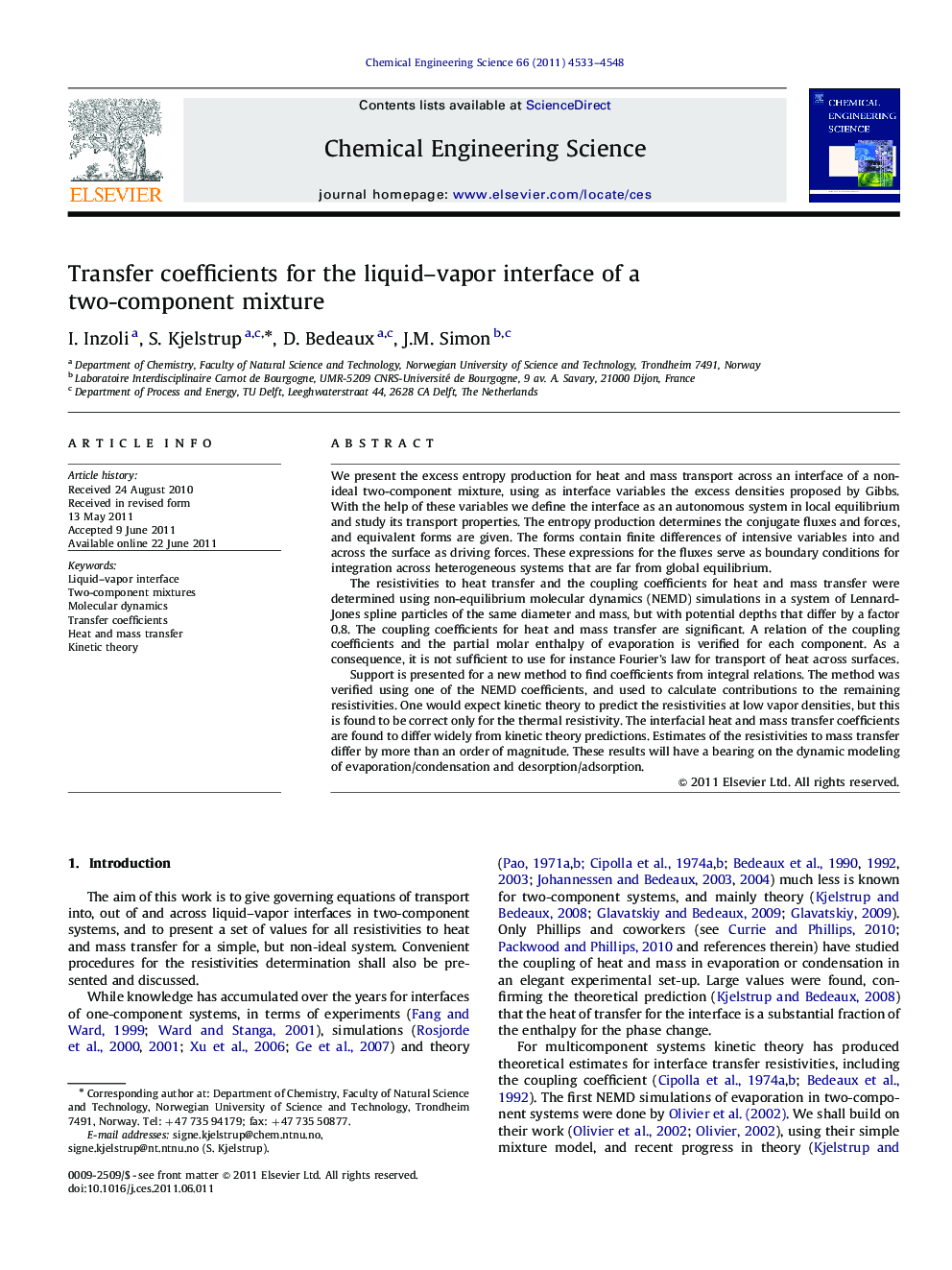| کد مقاله | کد نشریه | سال انتشار | مقاله انگلیسی | نسخه تمام متن |
|---|---|---|---|---|
| 156239 | 456926 | 2011 | 16 صفحه PDF | دانلود رایگان |

We present the excess entropy production for heat and mass transport across an interface of a non-ideal two-component mixture, using as interface variables the excess densities proposed by Gibbs. With the help of these variables we define the interface as an autonomous system in local equilibrium and study its transport properties. The entropy production determines the conjugate fluxes and forces, and equivalent forms are given. The forms contain finite differences of intensive variables into and across the surface as driving forces. These expressions for the fluxes serve as boundary conditions for integration across heterogeneous systems that are far from global equilibrium.The resistivities to heat transfer and the coupling coefficients for heat and mass transfer were determined using non-equilibrium molecular dynamics (NEMD) simulations in a system of Lennard-Jones spline particles of the same diameter and mass, but with potential depths that differ by a factor 0.8. The coupling coefficients for heat and mass transfer are significant. A relation of the coupling coefficients and the partial molar enthalpy of evaporation is verified for each component. As a consequence, it is not sufficient to use for instance Fourier's law for transport of heat across surfaces.Support is presented for a new method to find coefficients from integral relations. The method was verified using one of the NEMD coefficients, and used to calculate contributions to the remaining resistivities. One would expect kinetic theory to predict the resistivities at low vapor densities, but this is found to be correct only for the thermal resistivity. The interfacial heat and mass transfer coefficients are found to differ widely from kinetic theory predictions. Estimates of the resistivities to mass transfer differ by more than an order of magnitude. These results will have a bearing on the dynamic modeling of evaporation/condensation and desorption/adsorption.
► We compute by non-equilibrium molecular dynamics simulations, for the first time for a two-component system.
► All surface transfer coefficients, except the thermal resistivity, deviate from those predicted by kinetic theory.
► Surface transfer coefficients; regular with second law of thermodynamics are important for similes of phase transformation.
Journal: Chemical Engineering Science - Volume 66, Issue 20, 15 October 2011, Pages 4533–4548